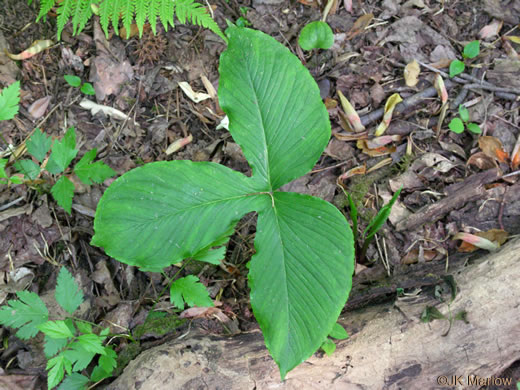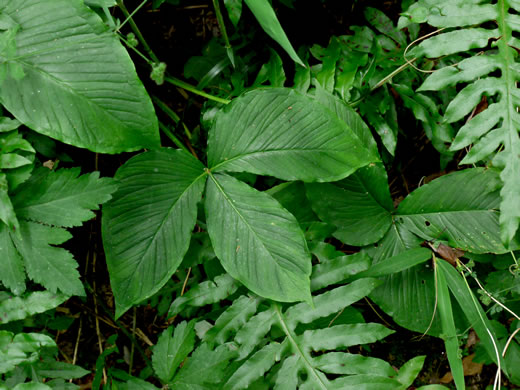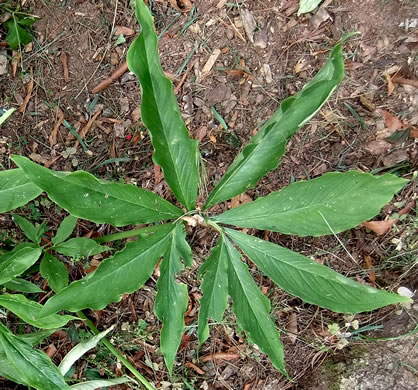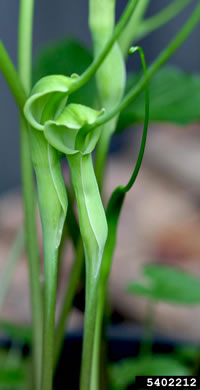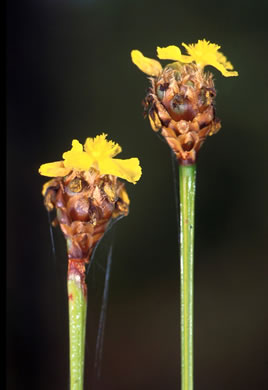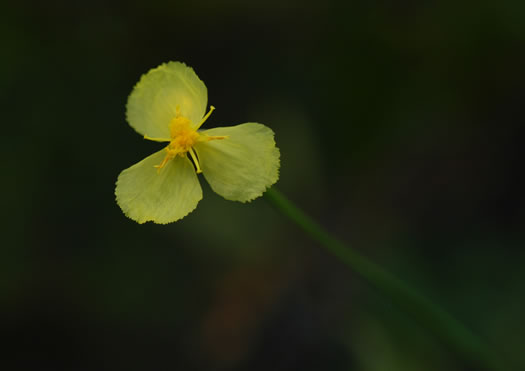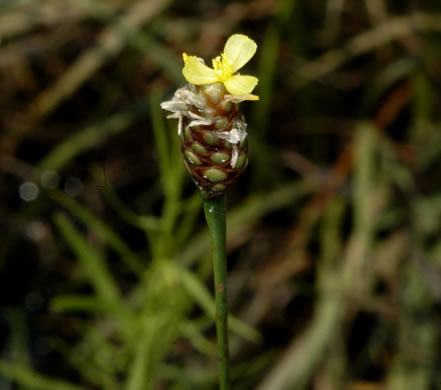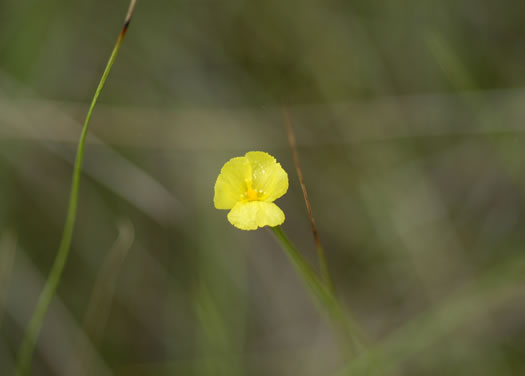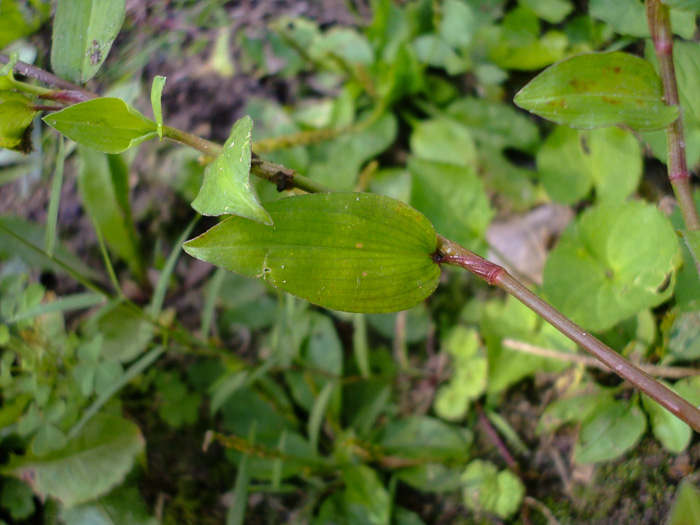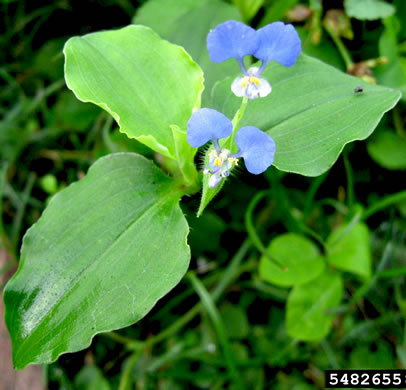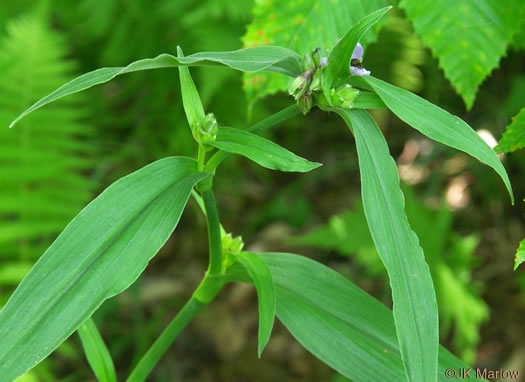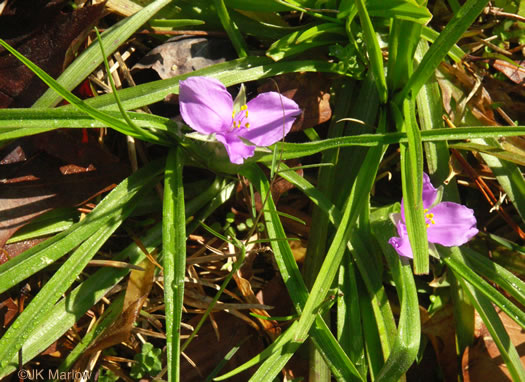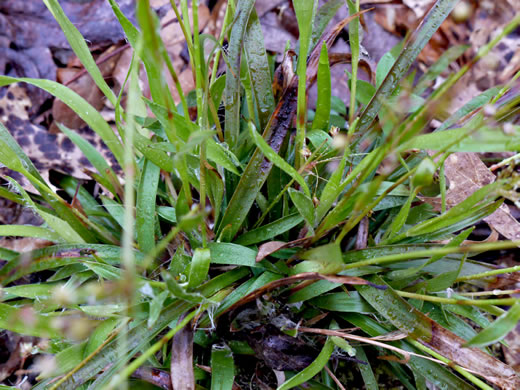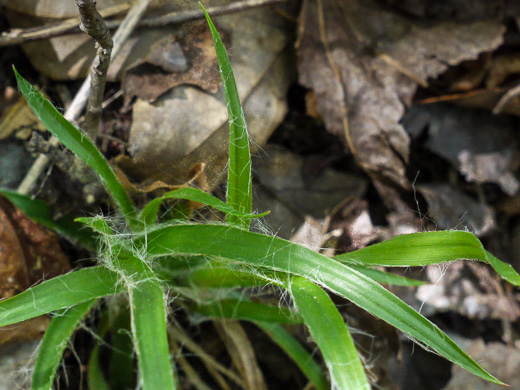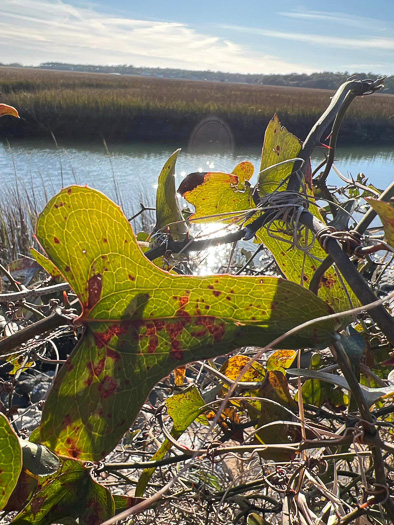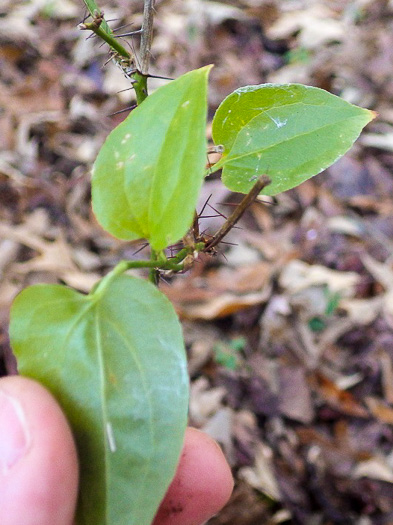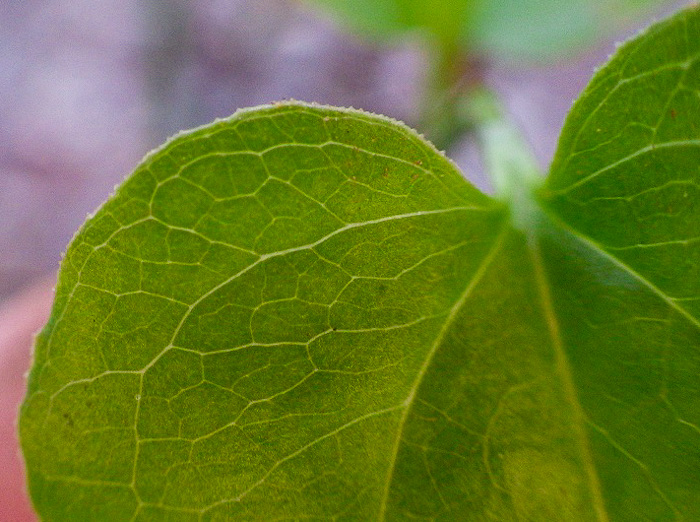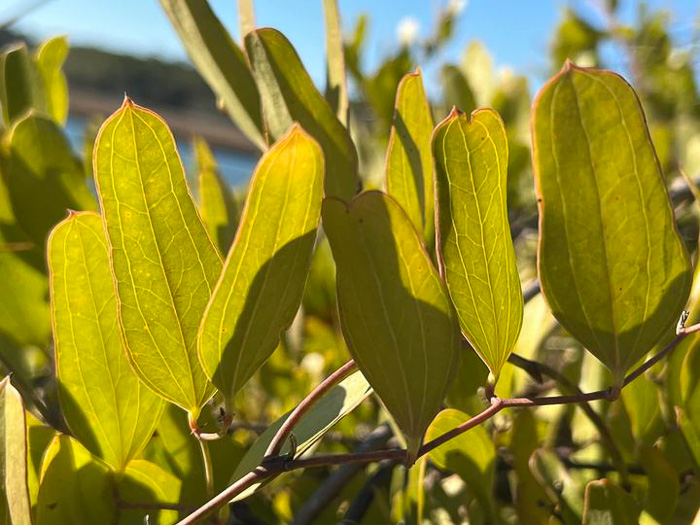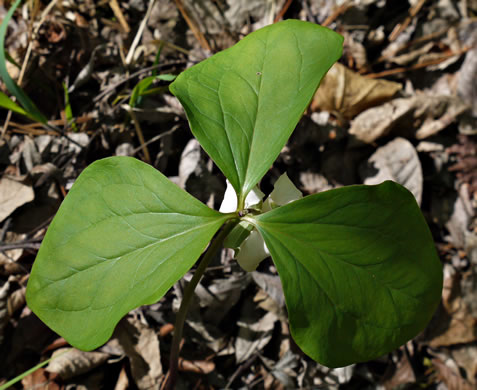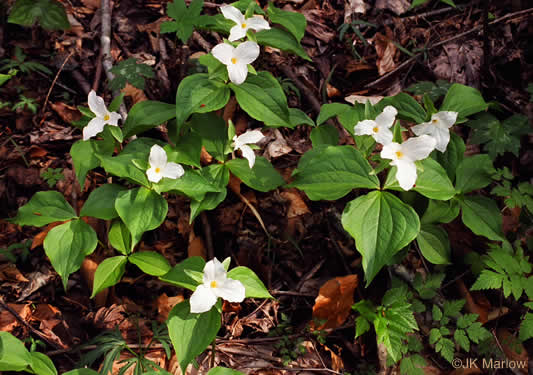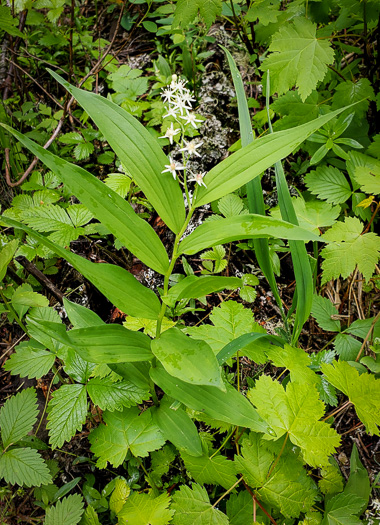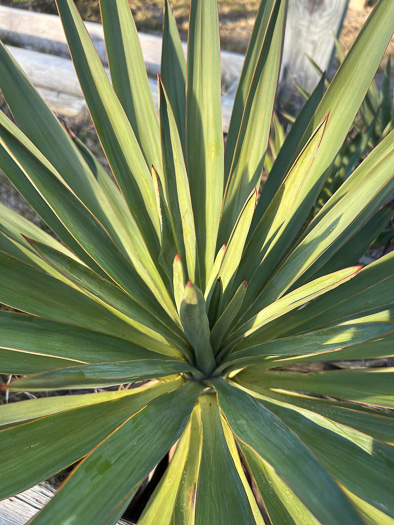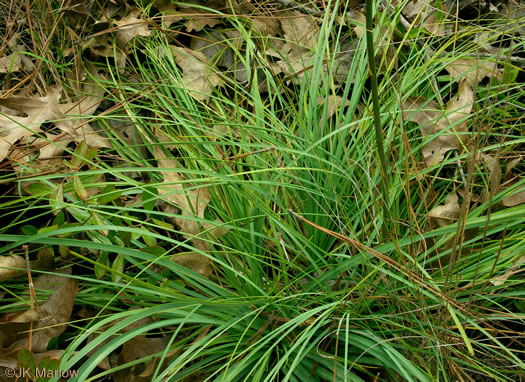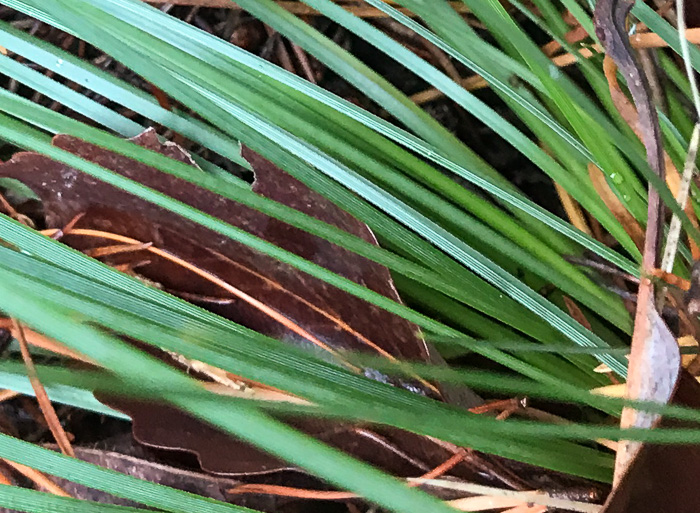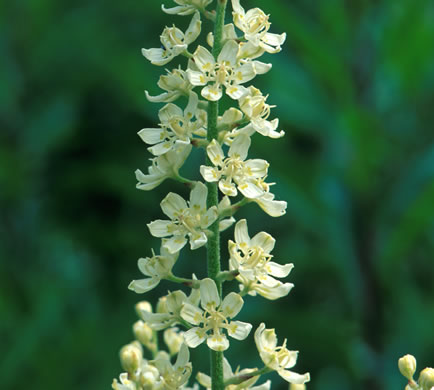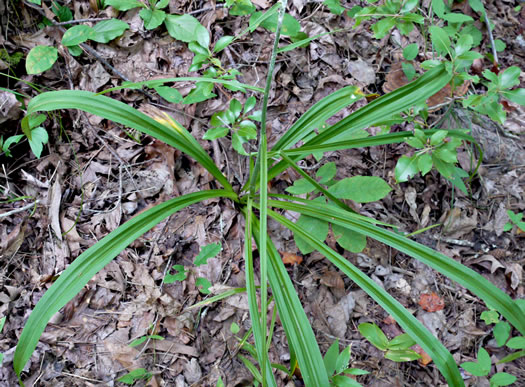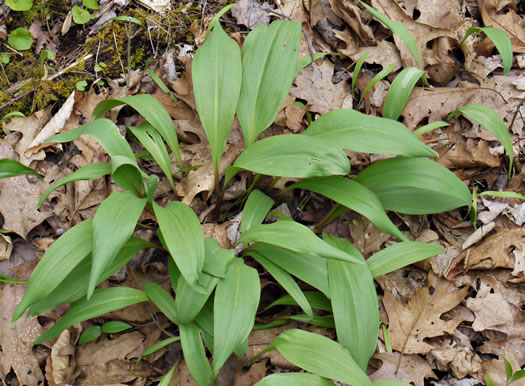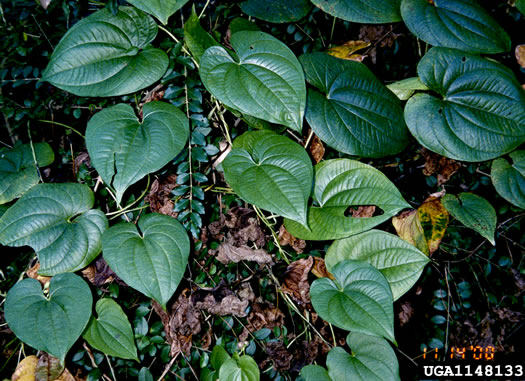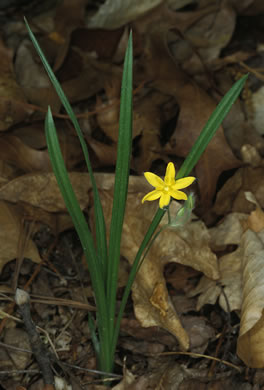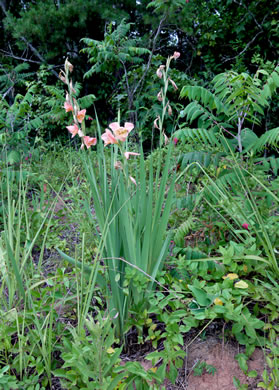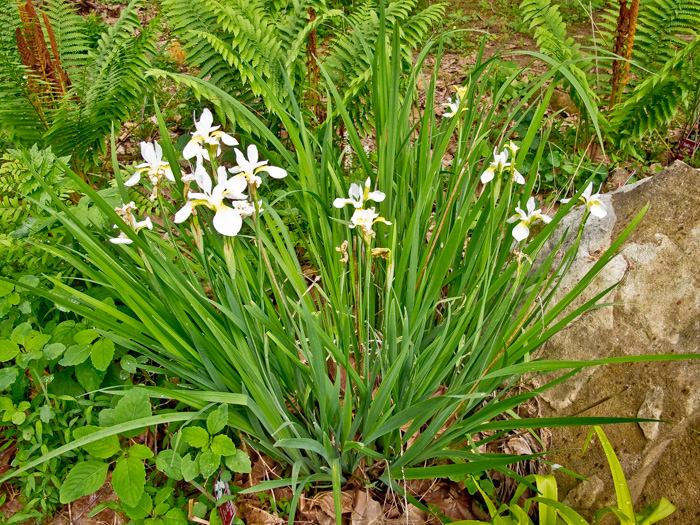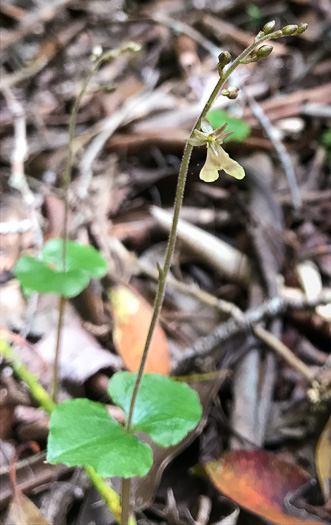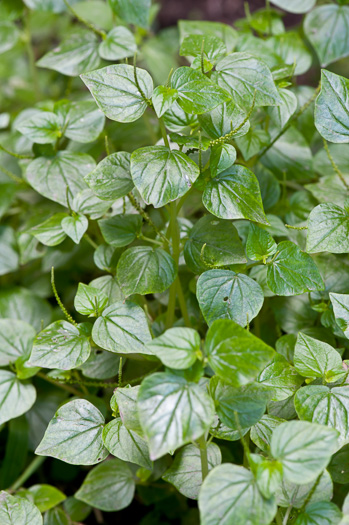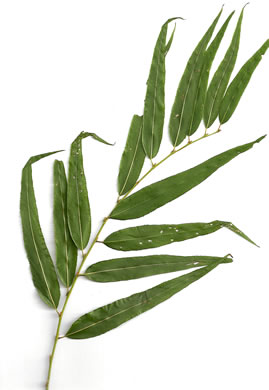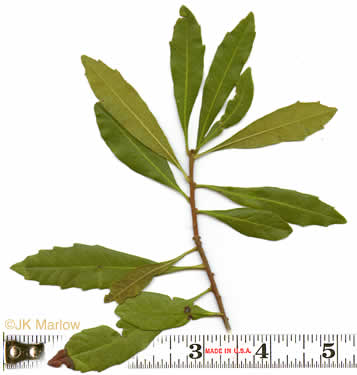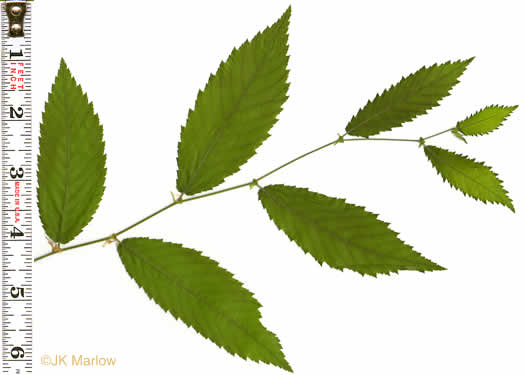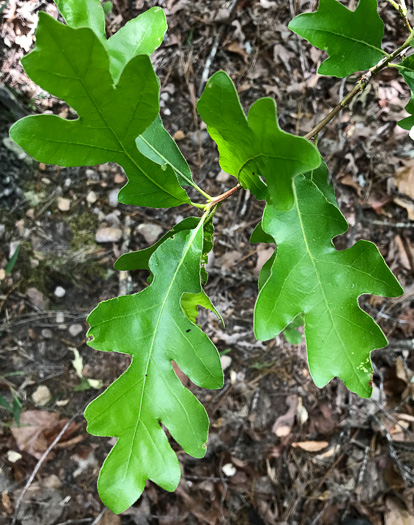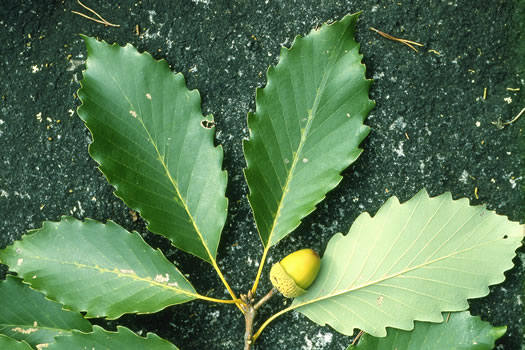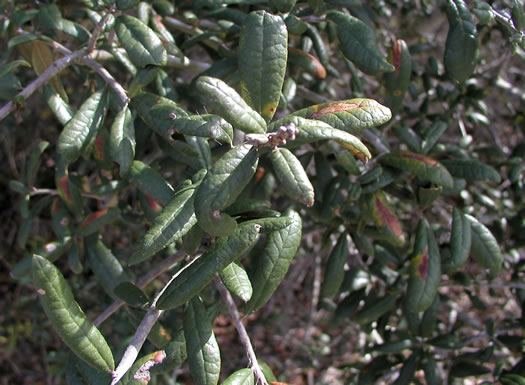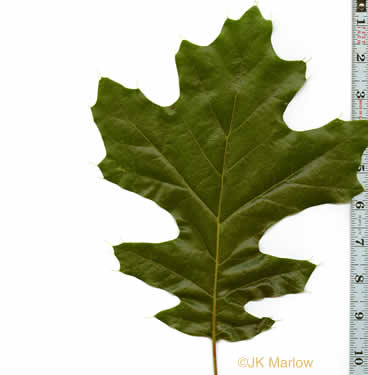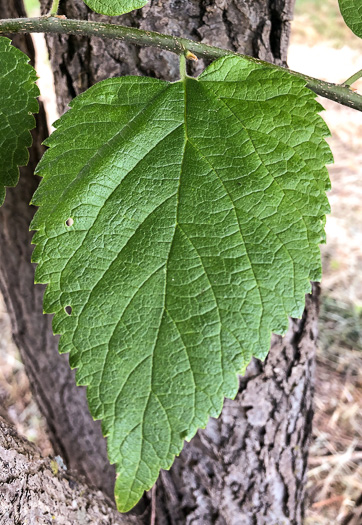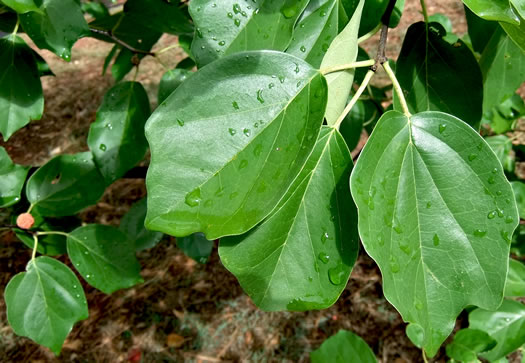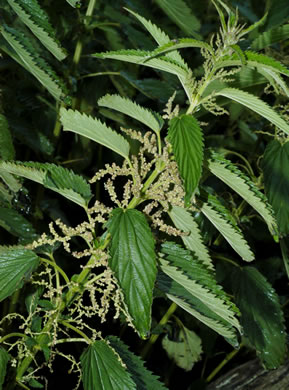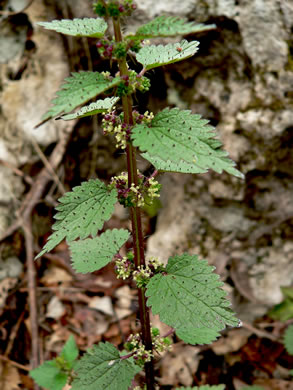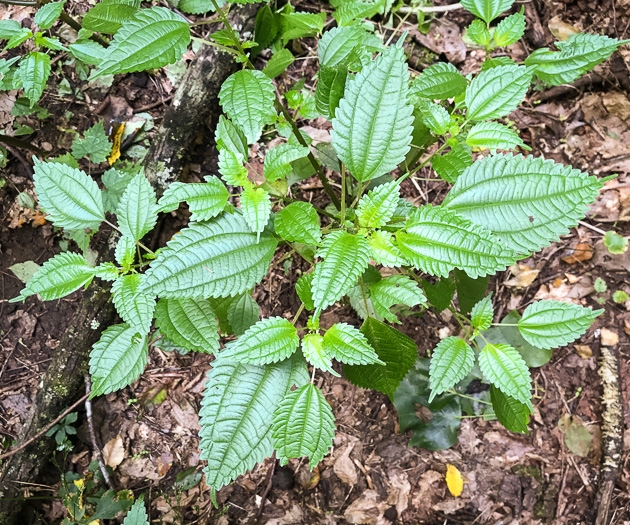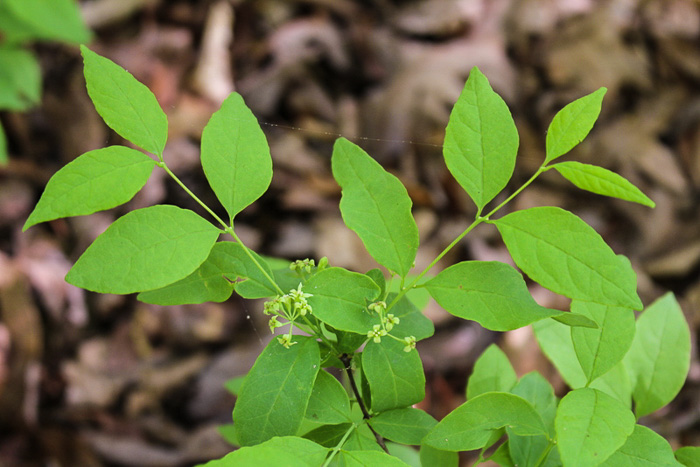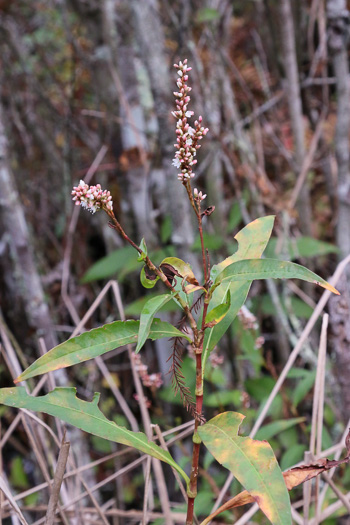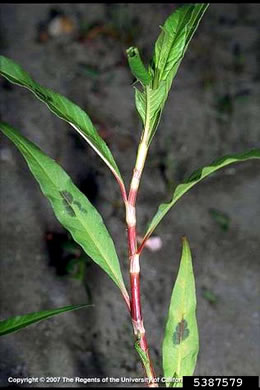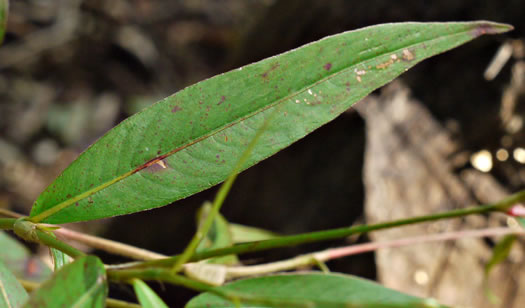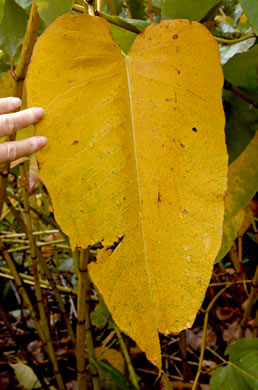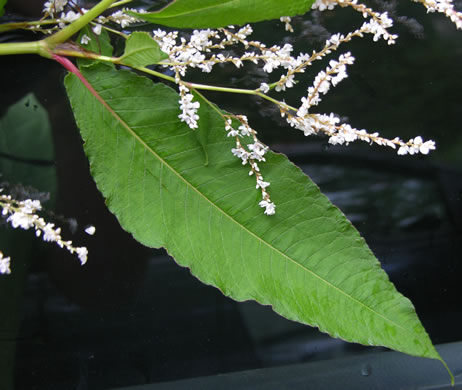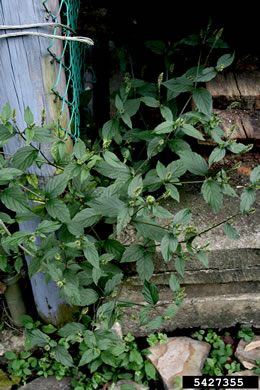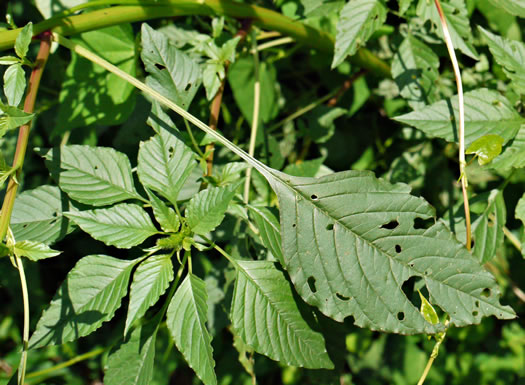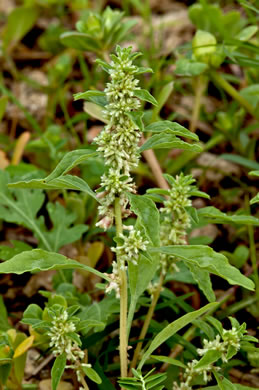Your search found 493 image(s) illustrating the term "blade." For a written explanation, click on "blade" in the Glossary.
PAGE 1 PAGE 2 PAGE 3 PAGE 4 PAGE 5 PAGE 6 PAGE 7 PAGE 8 PAGE 9
To see larger pictures, click or hover over the thumbnails.
To go to the plant's detail page, click its name.
 Green Dragon,
Pinellia tripartita
Green Dragon,
Pinellia tripartita
Leaf blade deeply 3-partite, anterior lobe broadly ovate or ovate-oblong, per Flora of China.
 Green Dragon,
Pinellia tripartita
Green Dragon,
Pinellia tripartita
Leaf blade's anterior lobe broadly ovate or ovate-oblong, sessile, per Flora of China.
 Chinese Green Dragon,
Pinellia pedatisecta
Chinese Green Dragon,
Pinellia pedatisecta
Leaf blade always pedate; leaflets sessile, lanceolate, base cuneate, per Flora of China.
 Green Dragon,
Pinellia tripartita
Green Dragon,
Pinellia tripartita
Spathe persistent, slightly constricted between tube & blade, per Flora of China.
 Giant Yellow-eyed-grass,
Xyris fimbriata
Giant Yellow-eyed-grass,
Xyris fimbriata
Flowers open 1:00-3:00pm EDT, the petal blades yellow, per Weakley's Flora.
 Pineland Yellow-eyed-grass,
Xyris caroliniana
Pineland Yellow-eyed-grass,
Xyris caroliniana
Petal blades white or yellow, per Weakley's Flora (2022).
 Pineland Yellow-eyed-grass,
Xyris stricta
Pineland Yellow-eyed-grass,
Xyris stricta
Petal blades triangular-cuneate, 3-5mm long, opening at mid-day, per Weakley's Flora (2020).
 Baldwin's Yellow-eyed-grass,
Xyris baldwiniana
Baldwin's Yellow-eyed-grass,
Xyris baldwiniana
Scape as broad or broader than the leaf blades. Staminodia beardless, per Weakley's Flora.
 Spreading Dayflower,
Commelina diffusa
Spreading Dayflower,
Commelina diffusa
Leaf blades 1.5-5cm long × 0.5-1cm wide (rarely to 8 × 2.2cm), per Weakley's Flora (2020).
 Tropical Spiderwort,
Commelina benghalensis
Tropical Spiderwort,
Commelina benghalensis
Leaf blades broadly elliptic-ovate, 2-9cm long, per Weakley's Flora (2015).
 Zigzag Spiderwort,
Tradescantia subaspera
Zigzag Spiderwort,
Tradescantia subaspera
Leaves 0.6-4.5cm wide (upper leaf blades wider than opened flattened sheath), per Vascular Flora of the Carolinas (Radford, Ahles, & Bell, 1968).
 Hairy Spiderwort,
Tradescantia hirsutiflora
Hairy Spiderwort,
Tradescantia hirsutiflora
Leaf blades of upper leaves are not constricted to a subpetiolar sheath, per Weakley's Flora.
 Leathery Rush,
Juncus coriaceus
Leathery Rush,
Juncus coriaceus
At least a few sheaths at base of plant with well developed blades, per Weakley's Flora (2020).
 Carolina Woodrush,
Luzula acuminata var. carolinae
Carolina Woodrush,
Luzula acuminata var. carolinae
Luzula leaf blades flat & ciliate (vs. Juncus either flat or terete, glabrous), per Weakley's Flora.
 Hedgehog Woodrush,
Luzula echinata
Hedgehog Woodrush,
Luzula echinata
Luzula leaf blades flat & ciliate (vs. Juncus either flat or terete, glabrous), per Weakley's Flora.
 Maritime Catbrier,
Smilax bona-nox var. littoralis
Maritime Catbrier,
Smilax bona-nox var. littoralis
Margin of the leaf blade with a prominent marginal cartilaginous band, per Weakley's Flora (2022).
 Bristly Greenbrier,
Smilax hispida var. hispida
Bristly Greenbrier,
Smilax hispida var. hispida
Undersides of leaf blades green, not glaucous, per Flora of North America.
 Bristly Greenbrier,
Smilax hispida var. hispida
Bristly Greenbrier,
Smilax hispida var. hispida
Leaf blade margins uniformly minutely serrulate in basal half, per Flora of North America.
 Dune Greenbrier,
Smilax auriculata
Dune Greenbrier,
Smilax auriculata
Blades frequently broadened or auricled below midpoint, margin with prominent cartilaginous band, per Weakley's Flora (2022).
 Catesby's Trillium,
Trillium catesbyi
Catesby's Trillium,
Trillium catesbyi
Leaves with small stalks, the blades broadest near the middle, per Trilliums of Georgia (Patrick, 2007).
 Large-flowered Trillium,
Trillium grandiflorum
Large-flowered Trillium,
Trillium grandiflorum
Leaves without stalks, blades widest below middle, per Trilliums of Georgia (Patrick, 2007).
 Starry Solomon's Plume,
Maianthemum stellatum
Starry Solomon's Plume,
Maianthemum stellatum
Leaves 6-11 per stem; leaf blades sessile or subclasping at the base, per Weakley's Flora (2022).
 Mound-lily Yucca,
Yucca gloriosa
Mound-lily Yucca,
Yucca gloriosa
Leaf blades rigid, straight; margins entire, smooth, hyaline, not fraying as stiff threads, per Weakley's Flora (2022).
 Georgia Beargrass,
Nolina georgiana
Georgia Beargrass,
Nolina georgiana
Leaf blades grasslike, flexible, 3-8mm wide, glaucous; margins serrulate, per Flora of North America.
 Eastern Turkeybeard,
Xerophyllum asphodeloides
Eastern Turkeybeard,
Xerophyllum asphodeloides
Leaf blades filiform-linear, keeled, rigid, margins serrulate, apex wiry pointed, densely tufted, per Flora of North America.
 Virginia Bunchflower,
Melanthium virginicum
Virginia Bunchflower,
Melanthium virginicum
Tepal margins entire & planar or nearly so; tepal claw < 1/3 as long as blade, per Flora of North America.
 Crisped Bunchflower,
Melanthium hybridum
Crisped Bunchflower,
Melanthium hybridum
Leaf blades narrowly oblanceolate, 25-55cm long, 1-7.2 cm wide, apex acute, per Flora of North America.
 Ozark Bunchflower,
Melanthium woodii
Ozark Bunchflower,
Melanthium woodii
Leaf blades elliptic to oblanceolate, apex acute, per Flora of North America.
 Red Ramps,
Allium tricoccum
Red Ramps,
Allium tricoccum
Leaves usually absent at anthesis, blade tapering to long, slender petiole, per Flora of North America.
 Air Yam,
Dioscorea bulbifera
Air Yam,
Dioscorea bulbifera
Leaf blade broadly ovate-cordate, glabrous, entire, apex long-acuminate, per Flora of North America.
 Summer Snowflake,
Leucojum aestivum
Summer Snowflake,
Leucojum aestivum
Leaves well developed at anthesis, blade deep green, glossy, apex obtuse, per Flora of North America.
 Yellow Stargrass,
Hypoxis hirsuta
Yellow Stargrass,
Hypoxis hirsuta
Leaves grasslike; blade linear to setaceous. Scape usually shorter than leaves, per Flora of North America.
 Gladiolus,
Gladiolus dalenii ssp. dalenii
Gladiolus,
Gladiolus dalenii ssp. dalenii
Leaves 1-9; blade lanceolate to linear, plane, per Flora of North America.
 Siberian Iris,
Iris sibirica
Siberian Iris,
Iris sibirica
Stems hollow. Leaf blades dark green, often tinged pink at base, per Flora of North America.
 Kidneyleaf Twayblade,
Neottia smallii
Kidneyleaf Twayblade,
Neottia smallii
Leaves in the shape of a kidney, hence the name Kidney-leaved Twayblade, per Wild Orchids of South Carolina: A Popular Natural History (Fowler, 2005).
 Pepper-elder,
Peperomia pellucida
Pepper-elder,
Peperomia pellucida
Leaf blade palmately 5-7-veined, broadly ovate to deltate; surfaces glabrous, per Flora of North America.
 Black Willow,
Salix nigra
Black Willow,
Salix nigra
Lf blades narrowly lance-shaped, ~ 7" long, 3/4" wide, tips long-acuminate, per Native Trees of the Southeast, An Identification Guide (Kirkman, Brown, & Leopold, 2007).
 Common Wax-myrtle,
Morella cerifera
Common Wax-myrtle,
Morella cerifera
Leaf blades oblanceolate; margins irregularly serrate near tip, per Native Trees of the Southeast, An Identification Guide (Kirkman, Brown, & Leopold, 2007).
 American Hop-hornbeam,
Ostrya virginiana
American Hop-hornbeam,
Ostrya virginiana
Lvs 2-ranked, blades oblong to elliptical, margins singly or doubly serrate, per Native Trees of the Southeast, An Identification Guide (Kirkman, Brown, & Leopold, 2007).
 Sand Post Oak,
Quercus margaretiae
Sand Post Oak,
Quercus margaretiae
Largest lateral lobes usually at blade midpoint or below, the lobes usually not sublobed, per Weakley's Flora (2023).
 Rock Chestnut Oak,
Quercus montana
Rock Chestnut Oak,
Quercus montana
Leaf blades nearly elliptical, margins coarsely and irregularly toothed, per Native Trees of the Southeast, An Identification Guide (Kirkman, Brown, & Leopold, 2007).
 Sand Live Oak,
Quercus geminata
Sand Live Oak,
Quercus geminata
Leaf blade narrowly elliptic, base cuneate, margins entire and revolute, per Field Guide to Native Oak Species of Eastern North America (Stein, Binion, & Acciavatti, 2003).
 Black Oak,
Quercus velutina
Black Oak,
Quercus velutina
Leaf blades leathery, upper surfaces shiny, lower w tawny hairs along veins, per Native Trees of the Southeast, An Identification Guide (Kirkman, Brown, & Leopold, 2007).
 Myrtle Oak,
Quercus myrtifolia
Myrtle Oak,
Quercus myrtifolia
Leaf blades leathery, oval to elliptical, margins entire and revolute, per Native Trees of the Southeast, An Identification Guide (Kirkman, Brown, & Leopold, 2007).
 Northern Hackberry,
Celtis occidentalis
Northern Hackberry,
Celtis occidentalis
Leaf blades mostly < 2x long as wide, 5-12cm long, toothed well below middle, per Weakley's Flora (2012).
 Mulberry-weed,
Fatoua villosa
Mulberry-weed,
Fatoua villosa
Alternate, ovate leaves with cordate bases, borne on long petioles (about as long as leaf blade), per Weakley's Flora (2022).
 Cudrania,
Maclura tricuspidata
Cudrania,
Maclura tricuspidata
Leaf blade ovate to rhombic-ovate, occ. 3-lobed, base rounded to cuneate, per Flora of China.
 European Stinging Nettle,
Urtica dioica ssp. dioica
European Stinging Nettle,
Urtica dioica ssp. dioica
Stems & leaf blades strongly hispid w stinging hairs (on both leaf surfaces), per Weakley's Flora.
 Weak Nettle,
Urtica chamaedryoides
Weak Nettle,
Urtica chamaedryoides
Leaf blades usually widest below middle or near base; margins serrate, per Flora of North America.
 Greenfruit Clearweed,
Pilea pumila
Greenfruit Clearweed,
Pilea pumila
Foliage shiny, bright green; leaves 3-veined from blade base to apex, per Weakley's Flora (2012).
 Nestronia,
Nestronia umbellula
Nestronia,
Nestronia umbellula
Leaves opposite, broad-bladed, 3-6cm long, acute or acuminate, per Native Shrubs and Woody Vines of the Southeast (Foote & Jones, 1989).
 Dense-flower Smartweed,
Persicaria densiflora
Dense-flower Smartweed,
Persicaria densiflora
Leaf blades glabrous, lanceolate to oblong-lanceolate, cuneate, long-acute, per Aquatic and Wetland Plants of Southeastern United States (Godfrey & Wooten, 1979 & 1981).
 Spotted Lady's-thumb,
Persicaria maculosa
Spotted Lady's-thumb,
Persicaria maculosa
Leaf blade often with a triangular reddish blotch, per Weakley's Flora (2020).
 Dotted Smartweed,
Persicaria punctata
Dotted Smartweed,
Persicaria punctata
Leaf blade without dark blotch, lanceolate to lanceolate-ovate or subrhombic, per Flora of North America.
 Swamp Smartweed,
Persicaria setacea
Swamp Smartweed,
Persicaria setacea
Leaves lacking a triangular reddish blotch. Blades cuneate to truncate at base, per Weakley's Flora.
 Giant Knotweed,
Reynoutria sachalinensis
Giant Knotweed,
Reynoutria sachalinensis
Leaf blade ovate-oblong, 15-30(-40)cm long, base cordate, margins entire, per Flora of North America.
 Himalayan Knotweed,
Koenigia polystachya
Himalayan Knotweed,
Koenigia polystachya
Leaf blade lanceolate to elliptic-lanceolate, without dark blotch, per Flora of North America.
 Japanese Chaff-flower,
Achyranthes bidentata var. japonica
Japanese Chaff-flower,
Achyranthes bidentata var. japonica
Leaf blades ovate-elliptic, per Flora of North America.
 Smooth Pigweed,
Amaranthus hybridus ssp. hybridus
Smooth Pigweed,
Amaranthus hybridus ssp. hybridus
Blade ovate, rhombic-ovate, or lanceolate; petiole half or as long as blade, per Flora of North America.
 Tropical Amaranth,
Amaranthus polygonoides
Tropical Amaranth,
Amaranthus polygonoides
Leaf blade ovate, obovate-rhombic to narrowly ovate, sometimes lanceolate, per Flora of North America.

